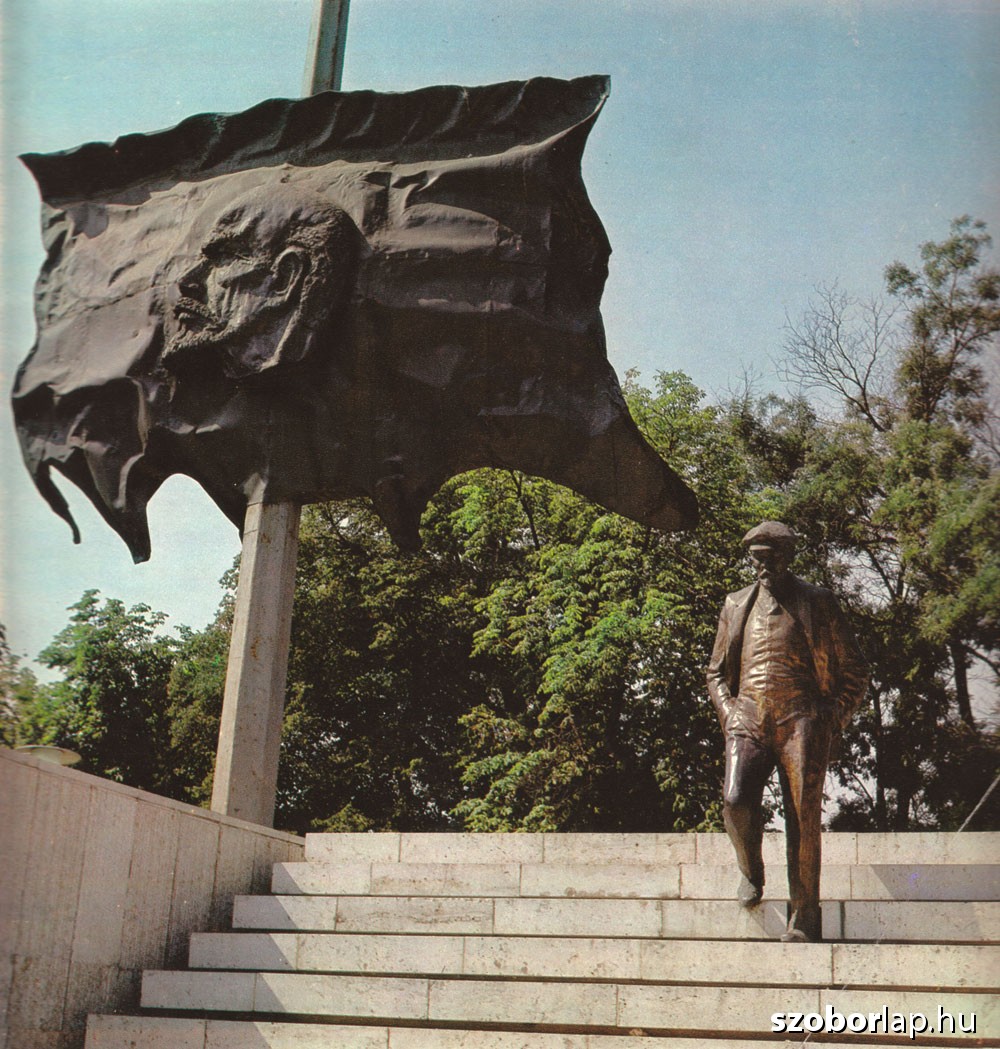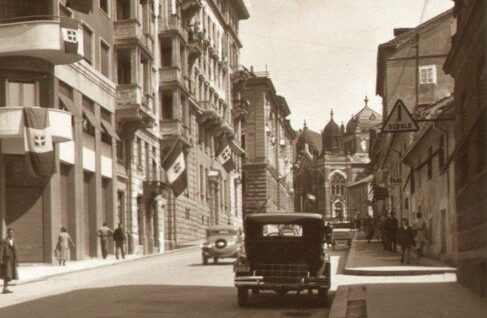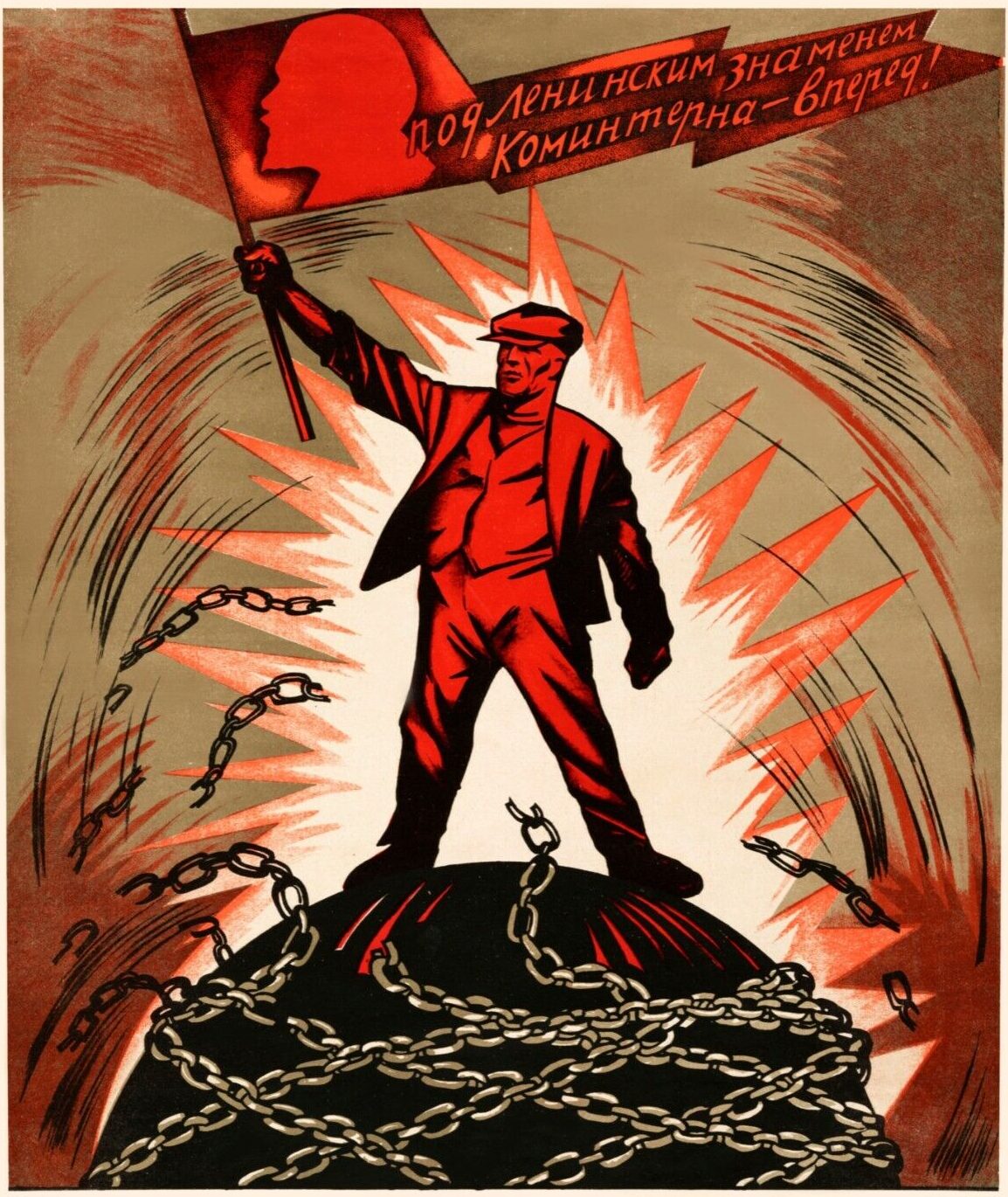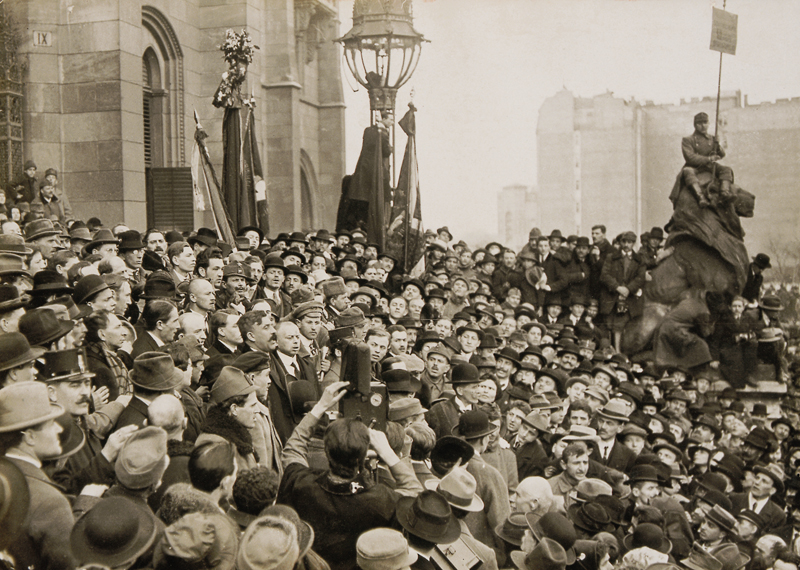I wrote a short non-academic piece for the commemorative volume Lenin: The Heritage We (Don’t) Renounce, published on the occasion of the centenary of Lenin’s death. My text is about the Lenin statue sculpted by Imre Varga in the Hungarian town of Mohács in the 1970s, which I think is the best Lenin statue ever made. You can find the text below, and the full book can be ordered here.
Mohács is a small town in Southern Hungary, rich in history even for the standards of Central European places of similar size, which have often seen their fair share of momentous events. It is perhaps most famous for the battle between Hungarians and the Ottomans in 1526, resulting in the Ottoman conquest of Hungary, which lasted for over a century and a half. To ethnographers, it is known for the UNESCO-listed Busójárás carnival, a local variant of the many pagan end-of-winter festivals throughout the world. For those interested in the history of the labour movement, however, there isn’t much to speak of, which is quite unusual for a country that saw a communist revolution in 1919, was a workers’ state for forty years, and had another upheaval in 1956 inspired by the anti-Stalinist communist reformers. Having said that, Mohács ought to be notable for something else, which is both politically and artistically significant: its (former) statue of Lenin.
The sculpture was made by Imre Varga, probably the finest modernist sculptor in Hungary. Passing away at the age of 96 in 2019, Varga lived long enough to see what the Hungarians usually euphemistically refer to as ‘regime change,’ and to adjust his artistic output accordingly, spending the final decades of his life making stylistically rather postmodern (and still quite good) statues of Hungarian national heroes that displaced those from the communist pantheon. The many well-deserved commendatory obituaries only referred in passing, if at all, to the Lenin statue in Mohács, merely listing it as one of the many works of the prolific artist. This is no surprise. Virtually all the statues by Varga which explicitly reference the now-undesirable period(s) of Hungarian history had been removed. The statue of Béla Kun, the leader of the Hungarian Soviet Republic of 1919, was among the lucky ones, exiled to the “Memento Park” outside of Budapest (despite the Orbán regime’s serious efforts to completely vilify what is easily the most glorious moment in the country’s long and illustrious history). Even Mihály Károlyi, the President of the liberal republic which preceded Kun’s Commune, was forcibly removed from its place next to the Hungarian Parliament and relocated to the sculptor’s hometown of Siófok on lake Balaton. The destruction of the monarchy is also considered politically unacceptable in the reactionary Hungary of today, and Lenin in Mohács was no exception to this iconoclastic trend: the statue was removed on November 22, 1990.
What makes this Lenin statue so special that I deem it worth salvaging, at least in words and images, for I could certainly not in any way achieve its restoration?
The statue, unveiled in 1974, portrays a massive (presumably red) banner with a larger-than-life face of Lenin. It is a well-known image from Soviet propaganda, dating back to at least half a century before. It is not an homage, it is a cliché, and a very intentional one. Its true meaning lies in the contrast that is provided by the second part of the sculptural narrative. The Lenin banner was, appropriately and predictably, set on a pedestal which one could climb: a pedestal which was, not by accident, envisioned to also serve as a staircase on which people could sit. Not too far from the banner, a climbing spectator would encounter the second figure in the composition, a regular man descending the stairs: short, indistinguishable, disinterested. He is pensively looking down at the ground, hands in pockets, not even noticing the huge banner overhead. The man has some distinguishing features, however: a newsboy cap and a goatee. This is another, human Lenin. The real Lenin.
Suddenly, the human’s disregard transforms from ignorant to intentional. Lenin has a very good reason for ignoring the man on the banner: it is not him. The cult is not him; the symbolism is not him; and the particularly daring observer must certainly have come to this conclusion: the worker’s state in which this monument is located is not him. The reality is as far from the grandiose propaganda as from the designs of the historical Lenin. Certainly, this most radical of possible conclusions did not go over the heads of the staff working in the Soviet Embassy in Budapest. Someone, either intuitive but ignorant or a master of doublethink, lodged a formal complaint. They were not the only ones. It allegedly took years of administrative back-and-forth between various party committees, in Budapest and in Mohács, before the monument’s erection was finally approved.
In other words, the real Lenin of Varga condemns the system which took up the banner of ‘Leninism.’ Most evidently, it also condemns the ‘personality cult.’ Certainly, the phrase was a bit of a buzzword at the time, since in the communist jargon it presented a convenient scapegoating of Stalin by Khrushchev. Khrushchev conjured the phrase to partially rehabilitate Stalin’s victims without ever bothering to rehabilitate the original Marxist science which had been battered with equal brutality as the heads that had studied it.
Nevertheless, the condemnation of the personality cult is important. Lenin famously loathed it, and those who knew him best, starting from Krupskaya, were against any exuberant displays of Lenin’s corpse. Later they would find out that this was among the lesser wilful misinterpretations of Lenin’s legacy by self-proclaimed ‘Leninists.’ Varga helps Lenin and his comrades to rectify this historical injustice, as much as art can rectify any injustice. If nothing else, he does so by inspiring the thought that the bizarre embalming of Lenin within a pyramid was not exactly what he would have had in mind. The image of the imposing banner rendered powerless by the existence of the real Lenin is so powerful that it almost rights the wrong of posthumously treating him as if he were an Egyptian pharaoh.
The Mohács Lenin was certainly one of Varga’s finest and most underappreciated works. It is also easily the finest statue of Lenin ever made. The winds of change which supposedly represented newfound freedoms failed to recognise and appreciate such an evident expression of artistic freedom. As they mocked the Stalinist censorship for its inability to recognise valuable art, the ‘liberators’ of 1989 acted the same way. As they repeated the liberal cynical cliché that “inside every revolutionary is a policeman,” their ‘revolution’ immediately embarked on a policing of the past of which they still stubbornly refuse to let go. This policing still indoctrinates us all throughout Eastern Europe in the name of ‘freedom’ as we navigate our lives through a region devastated by the harshest economic depression in human history.
As it happened, the police officers posing as freedom fighters sentenced the Lenin banner to death, and the real Lenin to exile. About a decade ago, a Hungarian blogger discovered the real Lenin in an outdoor storage facility, resting against the wall, looking as casual as ever, as unbothered by the events of the past thirty years as he was unbothered by the formidable banner. The real Lenin knows that defeat is never final, and that the 20th century was more than just a tragedy. The staircase-pedestal, which could hold him again, is also gone. In 2004, a Youth Centre was built in its stead. But that is okay. I dare say that this is the outcome that the human Lenin would have found most fitting anyway.
When people discover the secret of greatness
The squares will become devoid of monuments
– Branko Miljković




